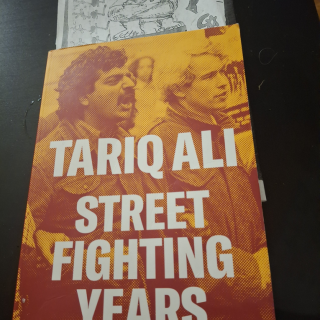During my decades-long teaching career, I have found that one of the reasons students shy away from history classes is they are afraid they will be forced to “memorize all those dates.” One pair of dates that they had tp grapple with sought to determine the beginning and end of the civil rights movement. Generally speaking, and for efficiency’s sake, the movement is usually placed in the time frame of 1954, when the United States Supreme Court ruled that segregated public schools were unconstitutional in Brown v Board of Education of Topeka, Kansas, through 1968, the year Dr. Martin Luther King, Jr., who had been proclaimed by the media as the leader of the freedom movement, was assassinated. While I suppose this is close enough for government work, it is at best misleading. Any number of incidents are claimed to be the beginning of the civil rights movement. So while I reflexively bristled at the subtitle of Alabama v King, I am always up for reading another book on the freedom movement.
When King was arrested on January 26, 1956, it was because he was participating in the Montgomery, Alabama, bus boycott. Blacks in Montgomery had long chafed against and protested about the segregated seating and poor treatment they received on the city’s buses. After the arrest of Rosa Parks, a one-day boycott was planned. One day turned into more than one year, and King, one of the leaders of the protest, was arrested a month after the boycott began; it was his first arrest. His mug shot is on the cover of the book: it shows a handsome, well dressed man with a card bearing his prisoner number hanging around his neck and staring directly at the camera. One must remember at this time going to jail or prison was anathema, especially in the black community. It was seen as deeply shameful, and reinforced the fictitious belief that blacks here inherently criminal. It also endangered their lives. Black boys and me who were jailed were routinely harassed and beaten; some were even murdered in custody. Black women and girls in jail were sometimes sexually assaulted. And yet because so many blacks were arrested and jailed during the boycott, one of the most important takeaways from the boycott was that it was an honor to be jailed for the cause of freedom. Indeed, “jail, no bail,” would become a rallying cry of the young people who engaged in non-violent protest.
In 1946, the National Association for the Advancement of Colored People (NAACP) was victorious in the case of Morgan v. Virginia, in which the Supreme Court ruled that segregated interstate bus lines violated the Commerce Clause of the United States Constitution. In some ways, though, that victory was hollow, as it did not apply to local and intrastate travel. Scores of southern cities rushed to enact local and state laws segregating bus transportation. Then on December 1, 1955, Rosa Parks was arrested for refusing to give up her seat to a white passenger.
Numerous witnesses at Dr. King’s trial testified to their humiliating experiences on the Montgomery bus line. Black passengers made up more than seventy percent of the bus riders, yet they were often put through a series of arbitrary or mandatory indignities from the time they boarded until they disembarked. Black passengers were made to board the bus, pay their fares, get off the bus, and reenter through the back door. At times, buses pulled away before passengers could get back on, and if they did reach the back door and did not get on the bus quickly enough to suit the driver, the doors were sometimes closed on them causing injuries. They were forced to sit in the back of the bus, even if the front seats that were reserved for white passengers were empty. If there were no empty seats for whites, blacks were forced to give up theirs. Bus drivers were known to drive past blacks who were waiting on the buses, even if their buses were not full. Black riders were cursed, ridiculed, and beaten; resisting the racist treatment directed at them got several black bus riders killed by drivers or the police.
Alabama v. King greatly benefits from being co-authored by Reverend Fred D. Gray, a prominent black minister and civil rights activist in Montgomery. Gray was in the thick of the black freedom movement before the public ever heard of King. In addition to defending Rosa Parks, he had acted as the lawyer for a young woman named Claudette Colvin, who had been arrested before Parks. Gray also reached out to Colvin, Parks, and several other black women and persuaded them to act as plaintiffs in a lawsuit against the bus company that would challenge segregated bus service. The book includes transcripts from some of the testimony, and they help the reader better understand more readily empathize with a bygone historical era. The legal strategy employed by the black lawyers is also clearly explained. It serves to underscore the bravery of blacks who stood in open court and did battle with white citizens.
No one incident, thing, or person can be responsible for a social movement the scale of the mid-twentieth century freedom struggle for black Americans. But the boycott, subsequent arrests, and the trial of Dr. King put racism in America on the front burner, and highlighted the gaping chasm between its words and deeds. It also thrust the twenty-seven years old Baptist preacher into the national and international limelight, where he would remain until his assassination in 1968.
And when did the twentieth-century freedom movement end? By the end of the lecture, my students have figure out that it ain’t over yet.



